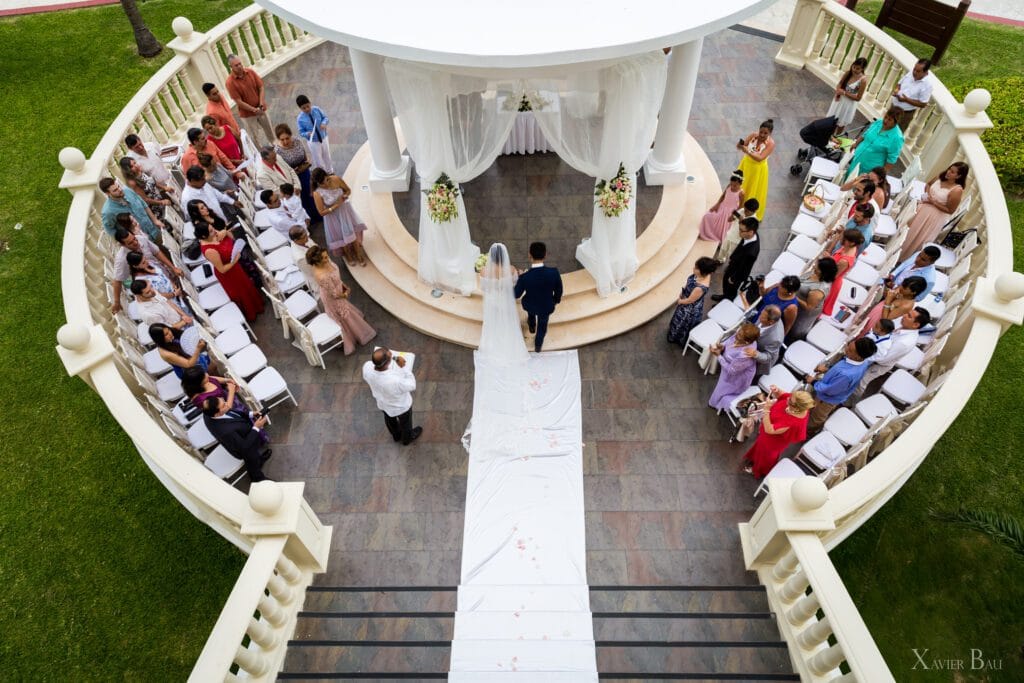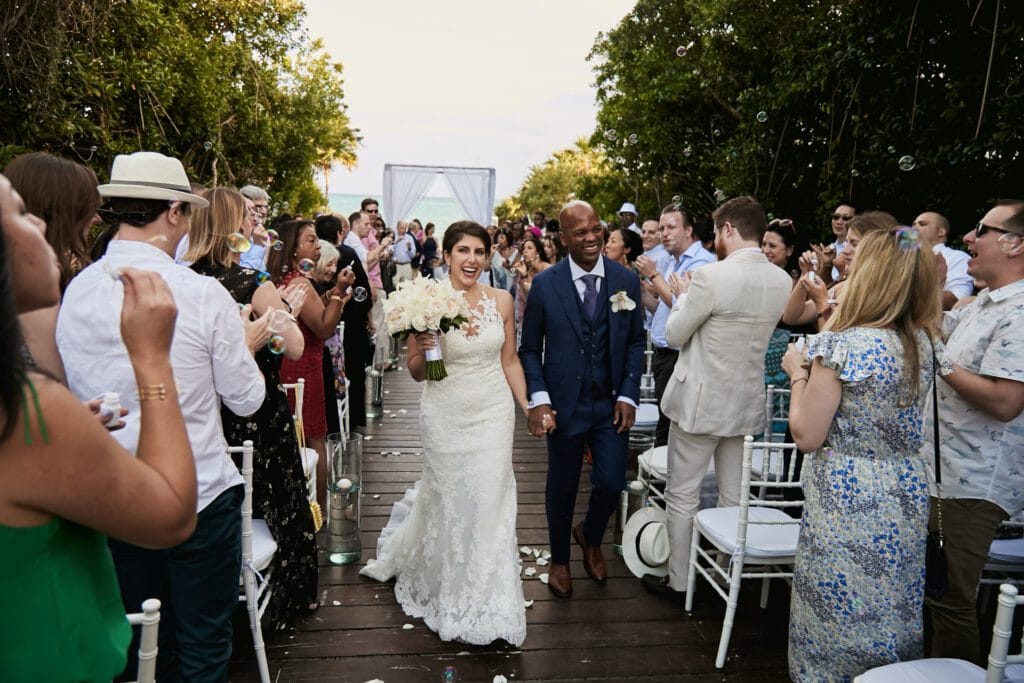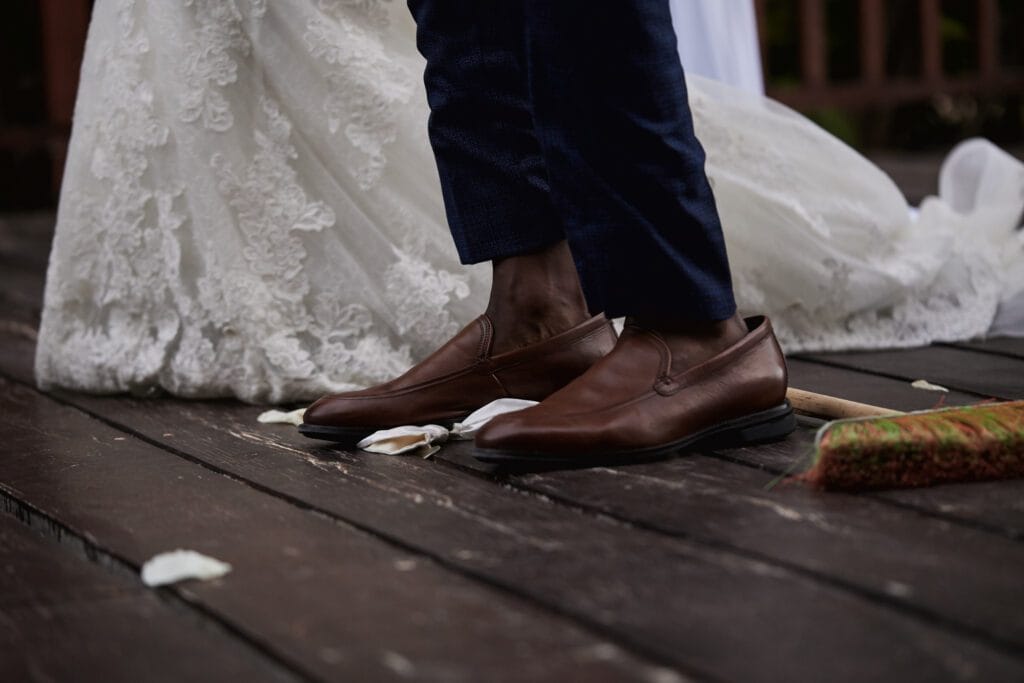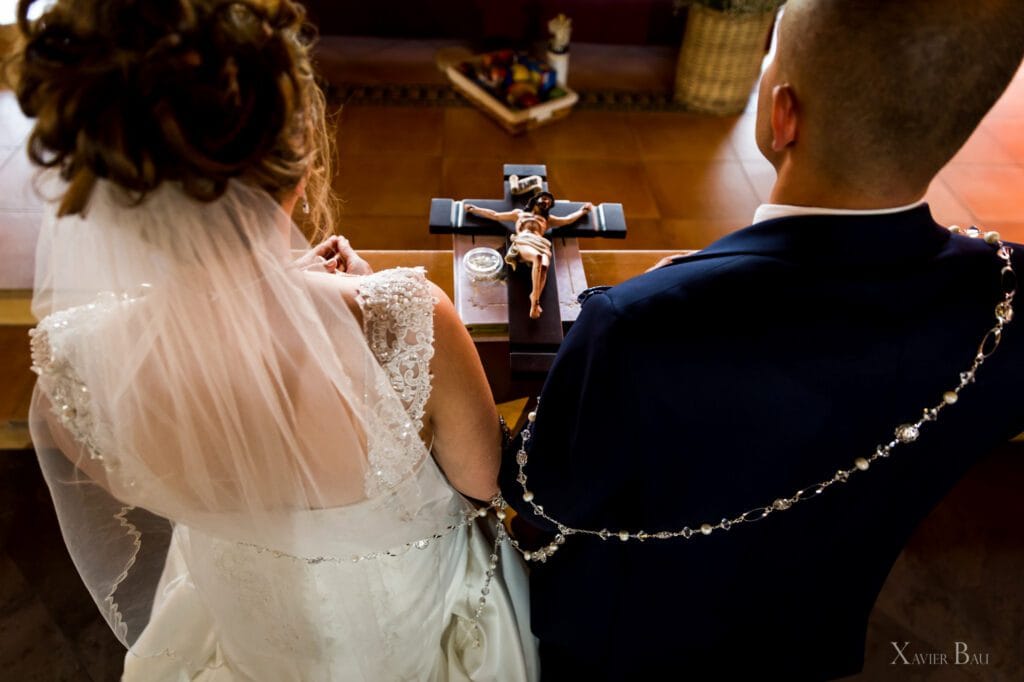Faith Through My Lens: Tips for Jewish, Catholic & Symbolic Beach Weddings

Capturing the essence of every religious and symbolic ceremony in the Caribbean paradise
By Xavier Bau | Professional Wedding Photographer | November 4, 2025
As a wedding photographer in Riviera Maya with over a decade of experience, I’ve had the honor of capturing ceremonies from different religions and traditions. Each wedding is unique, but when we talk about Jewish, Catholic, and symbolic beach weddings, there are special elements that make these moments truly magical. Today, I want to share my experience from behind the lens, along with valuable information about the differences between legal and symbolic weddings that every travel agent should know.
The Difference Between Legal and Symbolic Weddings: What You Need to Know
Before diving into the details of each type of ceremony, it’s essential to understand the distinction between a legal and a symbolic wedding, especially for those planning a destination wedding in Mexico.
Legal Wedding (Civil)
A legal wedding is one that has legal validity and is recognized by the civil authorities of the country where it takes place. In Mexico, for a wedding to be legal, it must meet the following requirements:
- Official documentation: Apostilled birth certificates, official IDs, and if applicable, divorce or death certificates from previous marriages.
- Prior processing: Documents must be submitted to the Civil Registry at least 8 days in advance.
- Presence of Civil Registry Judge: An authorized official must preside over the ceremony.
- Legal witnesses: Generally, 4 Mexican witnesses with official identification are required.
- Processing time: The marriage certificate can take several weeks to be issued.
💡 Tip for Travel Agents
Most international couples choose to have their legal wedding in their home country and celebrate a symbolic ceremony in Mexico. This greatly simplifies logistics and significantly reduces administrative costs. As a travel agent, it’s crucial to inform your clients about this option from the first contact.
Symbolic Wedding
A symbolic wedding is a ceremonial celebration that has no legal validity, but possesses all the emotional, spiritual, and religious significance of a traditional wedding. Its characteristics are:
- No legal requirements: Complex civil documentation is not needed.
- Total flexibility: You can personalize every aspect of the ceremony.
- Officiant of your choice: Can be a minister, rabbi, priest (in some cases), or even a close friend.
- Location freedom: Can be held on any beach, garden, or venue without legal restrictions.
- Focus on experience: All attention is centered on the celebration and meaningful rituals.
| Aspect | Legal Wedding | Symbolic Wedding |
|---|---|---|
| Legal Validity | ✅ Yes, legally recognized | ❌ No legal validity |
| Documentation | Extensive and apostilled | None required |
| Administrative Cost | $800–$1,500 USD additional | Only ceremonial cost |
| Preparation Time | Minimum 2–3 months | Flexible, even weeks |
| Location | Civil Registry restrictions | Totally flexible |
| Officiant | Civil Registry Judge | Free choice |
| Personalization | Limited by legal protocol | 100% customizable |
Jewish Weddings on the Beach: Tradition Under the Caribbean Sky
Jewish weddings are deeply symbolic ceremonies that adapt beautifully to the beach environment. The chuppah (wedding canopy) under the open sky facing the sea represents the home the couple will build together — and there’s no more beautiful roof than the Caribbean firmament.
Essential Elements of a Jewish Wedding

The Chuppah: This ceremonial canopy is the visual heart of the Jewish wedding. On the beach, I recommend robust structures that resist the sea breeze. I’ve photographed chuppahs decorated with tropical flowers, flowing white fabrics, and natural elements that integrate perfectly with the landscape. The natural light filtering through the fabrics creates absolutely magical photographs during the ceremony.
The Ketubah: The Jewish marriage contract is an artistic document that deserves special photographic attention. I suggest a dedicated moment before the ceremony to capture the signing of the ketubah with soft light, ideally in a shaded area to avoid glare on the document.
Breaking the Glass: This iconic moment marks the end of the ceremony. To capture it perfectly, I position myself strategically to freeze the exact moment when the groom breaks the glass, along with the joyful reaction of guests shouting “Mazel Tov!”

📸 Xavier’s Photography Tip
For Jewish ceremonies on the beach, schedule the ceremony during “golden hour” (one hour before sunset). The warm light enhances the tones of the chuppah and creates a heavenly atmosphere. Additionally, the sun in a low position avoids harsh shadows on faces during key moments like exchanging vows and the Seven Circles (Sheva Brachot).
Practical Considerations for Jewish Beach Weddings
- Sound: The sea wind can make hearing difficult. It’s essential to have a discreet but effective sound system.
- Chuppah anchoring: Must be perfectly secured. I’ve seen chuppahs fly away at weddings without proper preparation.
- Sand and footwear: Consider providing elegant sandals or conducting the ceremony on a wooden platform.
- Timing: Jewish ceremonies can last 20–30 minutes. Coordinate with the organizer to avoid intense midday heat.
If you’re planning a destination Jewish wedding, I invite you to contact me to discuss how we can capture every sacred tradition of your ceremony with the beauty of the Caribbean as a backdrop.
Catholic Weddings on the Beach: Faith, Tradition, and Sand
Catholic weddings have a specific ceremonial structure that, when held on the beach, requires special considerations. It’s important to distinguish between a complete Catholic ceremony (Nuptial Mass) and a symbolic Catholic blessing.
Nuptial Mass vs. Catholic Blessing

A complete Nuptial Mass with sacramental validity generally must be performed inside a Catholic church and requires that at least one of the spouses be a baptized Catholic. However, many couples opt for a symbolic Catholic blessing on the beach, officiated by a priest or deacon, which maintains the spiritual essence without the complete canonical requirements.
For legal Catholic weddings in Mexico, the requirements are even more complex than for civil weddings, as they must comply with both Church and State regulations. For this reason, most international couples perform their legal Catholic marriage in their home parish and celebrate a beautiful blessing ceremony on the Mexican beach.
Elements of a Catholic Beach Ceremony
The Altar: Even on the beach, the altar must have certain elements: a crucifix, candles, and frequently white flowers. As a photographer, I make sure to capture these details that represent the couple’s faith.
The Arras and Lasso: These Catholic/Latin traditions photograph beautifully outdoors. The moment when the lasso is placed over the couple, symbolizing their union, is particularly touching with the sea in the background.
Biblical Readings: Generally include readings from the Old and New Testament. I advise having stable lecterns and individual microphones for readers, as wind can make reading loose papers difficult.
Planning a Catholic Beach Wedding?
With my experience in religious weddings in Riviera Maya, I can help you capture every sacred moment of your ceremony. From the bride’s entrance to the final blessing, I’ll preserve every emotion and detail.
Tips for Photographing Catholic Beach Ceremonies
- Positioning during the entrance: Capture both the bride’s emotion and the groom’s reaction.
- Key moments: Rings, arras, lasso, and first kiss require perfect timing.
- Discretion: Move silently, use quiet shutter mode.
- Natural light: Avoid flash to maintain a sacred atmosphere.
Frequently Asked Questions
Q: Can we have a full Catholic Mass on the beach?
A: Generally, no. Full Catholic Masses must take place inside a consecrated church. However, you can have a beautiful symbolic Catholic blessing on the beach that includes prayers, readings, and religious elements.
Q: Are Jewish weddings allowed in all resorts?
A: Yes, but it’s important to check in advance. Some resorts may have restrictions related to external officiants or specific setup requirements for the chuppah. Working with experienced vendors simplifies this process.
Q: What’s the best time of day for a religious beach wedding?
A: Late afternoon (4–5 PM) is ideal to avoid heat and achieve the best lighting for photos during golden hour.
Q: Can you recommend resorts familiar with religious or symbolic weddings?
A: Absolutely. I’ve worked in most major resorts in the Riviera Maya and can suggest the ones that best fit your ceremony type and aesthetic preferences.
Final Recommendation
Whether you dream of a Jewish ceremony under a flowered chuppah or a Catholic blessing with the sea as your witness, every moment deserves to be captured with artistry and respect.
✨ Let’s create timeless memories together.
Discover my full photography collections and request a personalized quote here



